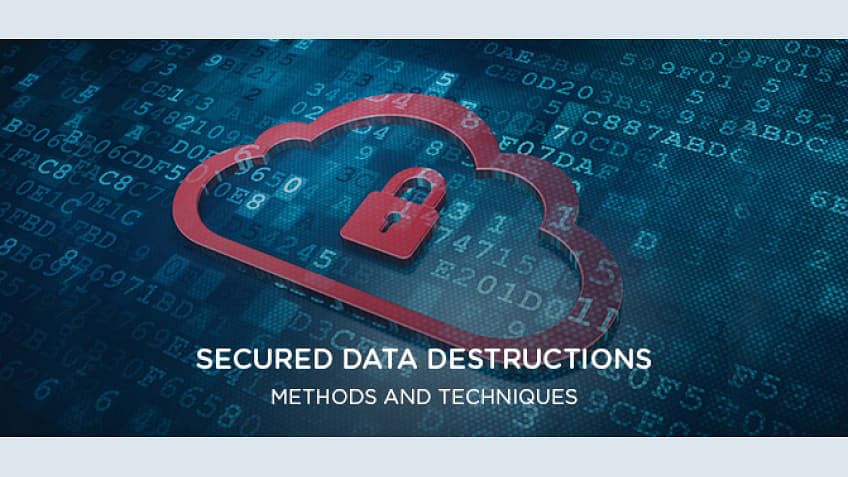How to Integrate Data Destruction Techniques right into Your Cyber Security Technique
How to Integrate Data Destruction Techniques right into Your Cyber Security Technique
Blog Article
Discovering the Significance of Data Damage in the Context of Computer Safety Providers and Protecting Confidential Data
In a period where data breaches are progressively typical, the value of reliable data damage can not be overemphasized. What approaches can organizations execute to enhance their information damage protocols?
Understanding Data Devastation
Data destruction is an essential component of computer system safety and security that includes the long-term elimination of data from storage devices to stop unauthorized access and prospective information violations. In a significantly digital landscape, organizations encounter enhanced risks linked with sensitive info being improperly accessed or manipulated. Reliable data devastation safeguards versus these risks, guaranteeing that personal dataâEUR" such as consumer information, intellectual residential or commercial property, and economic recordsâEUR" can not be recovered after disposal.
Comprehending the importance of information damage extends past mere conformity with governing and legal structures; it is vital for maintaining organizational stability and depend on. When data is poorly handled or improperly damaged, the effects can be extreme, including monetary loss, reputational damages, and lawful obligations.

Approaches of Information Eradication

One prevalent approach is data wiping, which involves overwriting existing data with arbitrary patterns numerous times. This strategy provides the initial information irretrievable, making it a popular choice for companies seeking to protect personal information.
One more approach is degaussing, which uses an effective electromagnetic field to disrupt the magnetic domain names on storage space tools, successfully eliminating the information. This approach is particularly efficient for magnetic media but is not appropriate to solid-state drives.
Physical devastation is another robust approach, crushing or entailing the shredding of storage tools. This approach guarantees that information recovery is virtually impossible, making it ideal for highly sensitive info.
Lastly, encryption can work as a complementary method to information removal. By securing data before deletion, companies can include an extra layer of security, making certain that also if remnants are recuperated, they continue to be hard to reach without the decryption secret. Each technique ought to be picked based on the level of data sensitivity and the particular safety requirements of the company.
Legal Compliance and Information Safety
Organizations have to navigate a complicated landscape of lawful needs associated with data safety, particularly after applying techniques of information removal. Numerous policies, such as the General Information Defense Law (GDPR) and the Medical Insurance Portability and Accountability Act (HIPAA), enforce strict guidelines on exactly how organizations need to manage and dispose of sensitive information. Failing to comply with these laws can lead to considerable legal consequences, consisting of substantial penalties and reputational damages.
Data destruction procedures need to be meticulously recorded to demonstrate conformity with appropriate check my site regulations and requirements. This documents not only offers as proof of adherence to lawful obligations however additionally illustrates a commitment to protecting sensitive information. Organizations must likewise establish clear plans relating to information retention and destruction timelines, guaranteeing that information is not held longer than needed.

Additionally, routine audits and evaluations of information devastation methods are necessary to preserve compliance and adapt to progressing legal frameworks (data destruction). By proactively addressing lawful needs, organizations can minimize threats related to data breaches and demonstrate their commitment my response to information safety and security. Eventually, prioritizing legal compliance in information devastation processes is not simply a regulative responsibility, but an essential facet of a durable data security technique
Effect On Business Track Record
The reputation of an organization can be significantly affected by its strategy to information destruction and monitoring. In today's electronic landscape, where information breaches can take place anytime, the failing to properly throw away sensitive information can bring about serious repercussions. Organizations that improperly handle data devastation risk subjecting confidential customer details, which not only breaks privacy laws however also wears down depend on amongst stakeholders and customers.
A ruined online reputation can lead to decreased client loyalty, as clients become reluctant to engage with a business that has actually shown neglect in securing their information. Moreover, unfavorable attention surrounding a data breach can have a long lasting effect, as possible customers could be deterred by the regarded lack of safety and security. This can bring about a straight decline in earnings and market share.
Furthermore, companies that focus on data destruction as component of their protection method can boost their reputation by showcasing their commitment to safeguarding delicate information. By embracing rigorous information management methods, organizations can not just minimize threats however also position themselves as reliable entities in their corresponding markets, thus strengthening their total brand name picture.

Ideal Practices for Secure Disposal
Executing ideal practices for safe disposal of information is essential for reducing threats related to data breaches and guaranteeing conformity with personal privacy regulations. Organizations must take on a thorough information disposal policy that lays out treatments for both physical and digital data devastation.
For physical information storage space devices, such as hard disk drives, shredding or degaussing is suggested to stop information recuperation. Furthermore, companies should keep a chain of protection documentation throughout the disposal process, making certain accountability and traceability of disposed Full Article products.
For electronic data, utilizing software application that sticks to market requirements for information cleaning is essential. This software must overwrite existing data numerous times, making recovery basically difficult. It is also vital to validate the performance of the data destruction process via audits or third-party analyses.
Training employees on protected disposal techniques includes an additional layer of security, as human mistake can typically cause data exposure. Consistently assessing and upgrading disposal policies makes certain alignment with evolving guidelines and technological improvements. By implementing these finest practices, companies can significantly decrease the threat of unauthorized information gain access to and improve their total data security approach.
Verdict
Finally, data devastation is a basic element of computer system safety and security services that makes certain the protection of confidential information from unapproved gain access to. Carrying out reliable approaches of information elimination, adhering to lawful conformity, and recognizing the impact on business online reputation are essential parts of a thorough data protection approach. By adopting ideal techniques for safe and secure disposal, companies can cultivate trust fund with clients and protect delicate data, eventually adding to an extra safe and secure electronic landscape.
In a period where data breaches are progressively common, the relevance of efficient information devastation can not be overstated.Data destruction is a crucial component of computer safety that involves the irreversible elimination of information from storage space devices to avoid unauthorized gain access to and potential information violations. Organizations should additionally develop clear plans concerning information retention and damage timelines, making sure that information is not held longer than essential.
By proactively dealing with lawful needs, companies can minimize dangers linked with data breaches and show their commitment to information safety (data destruction). Eventually, focusing on legal conformity in information destruction processes is not just a regulative responsibility, yet a fundamental aspect of a robust information security technique
Report this page